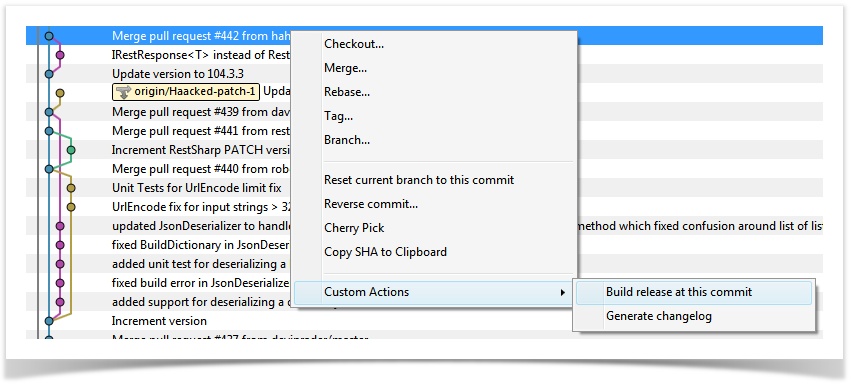

Now checkout the trunk like this: git checkout trunk Note the placement of the Subversion repository URL and the svn-authors.txt text file in that svn2git. In the Working Copy Path section, insert your local repository folder path. Make note of the source Subversion repository URL: Īnd run svn2git within the Git repository directory to let the magic begin: svn2git -authors svn-authors.txt -verbose -rootistrunk Now, create a Git repository in that directory: git init Go into that Some-Project directory: cd Some-Project Step Two: Create the new Git repository and run the conversion.Ĭreate a directory of the new Git repository: mkdir Some-Project Save that svn-authors.txt and move onto the next steps.

Here is how you would do this.įirst, in the Subversion cloned directory, run this command to get a list of authors connected to the Subversion repository: svn log -xml | grep author | sort -u | perl -pe 's/.*>(.*?) While the Subversion repository to Git repository process is pretty clean, the one thing you need to do before you start is to map the user names from the Subversion repository to something that matches users in the Git repository. Step 1: Prepare the Subversion author list map file for Git usage. Checkout the trunk branch in the converted Git repo.Convert the Subversion repo to a Git repo.Map the authors from Subversion to Git format.Here is how I use it: There are two initial major steps and one after-conversion step:
Using sourcetree code#
It uses git-svn to clone an svn repository and does some clean-up to make sure branches and tags are imported in a meaningful way, and that the code checked into master ends up being what's currently in your svn trunk rather than whichever svn branch your last commit was in.” “ svn2git is a tiny utility for migrating projects from Subversion to Git while keeping the trunk, branches and tags where they should be. Nope… Yes you can! Just use the snv2git Ruby GEM: Big thanks to Vincent Driessen for coming up with git-flow in the first place Try the Git-flow workflow yourself with Sourcetree 1. There are two possible approaches for building CMake from a source tree.“I don't think there is a way to convert the subversion information into Git information.” Git-flow is a great way to automate your handling of branch-based development in Git, and SourceTree now provides a simple and clear way to use it with an easy-to-use and intuitive GUI.
Using sourcetree download#
The Download page provides source releases. One may alternatively download and build CMake from source. There are pre-compiled binaries available on the Download page for some UNIX platforms. One may alternatively download and build CMake from source as in the following section. Applications/CMake.app/Contents/bin) to the PATH.
Using sourcetree install#
Or, one may manually add the install directory (e.g. After copying CMake.app into /Applications (or a custom location), run it and follow the “How to Install For Command Line Use” menu item for instructions to make the command-line tools (e.g. There are pre-compiled binaries available on the Download page for macOS as disk images and tarballs. Typically this means selecting CMake as the Source directory and then selecting a binary directory for the resulting executables. Once the binary is installed, run it on CMake as you would any other project. In order to build CMake from a source tree on Windows, you must first install the latest binary version of CMake because it is used for building the source tree. The Download page also provides source releases. C:\Program Files\CMake\bin) to the PATH in a command prompt. If that is not selected during installation, one may manually add the install directory (e.g. The Windows installer has an option to modify the system PATH environment variable.
Using sourcetree zip#
There are pre-compiled binaries available on the Download page for Windows as MSI packages and ZIP files. There are several ways to install CMake, depending on your platform.


 0 kommentar(er)
0 kommentar(er)
